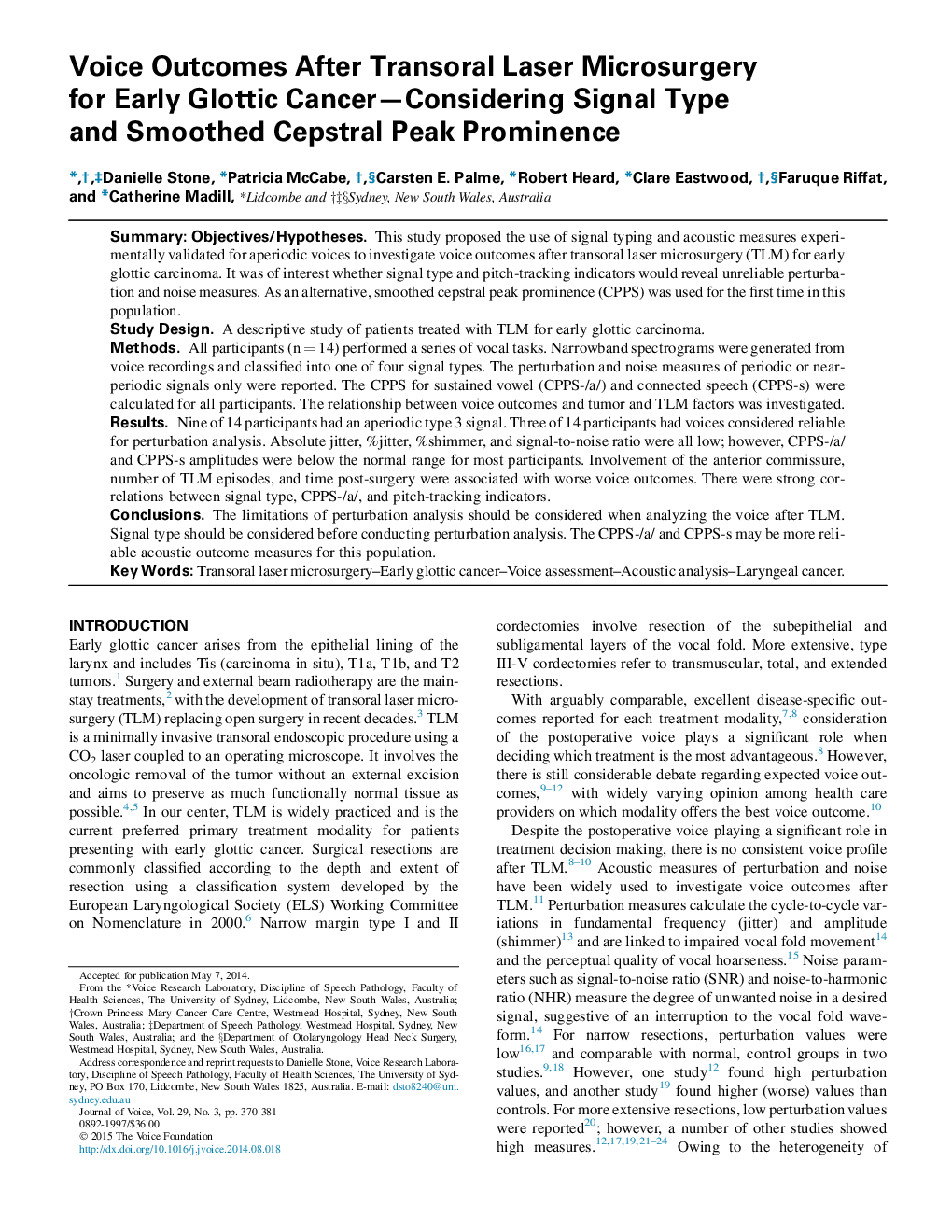| کد مقاله | کد نشریه | سال انتشار | مقاله انگلیسی | نسخه تمام متن |
|---|---|---|---|---|
| 1101416 | 953567 | 2015 | 12 صفحه PDF | دانلود رایگان |

SummaryObjectives/HypothesesThis study proposed the use of signal typing and acoustic measures experimentally validated for aperiodic voices to investigate voice outcomes after transoral laser microsurgery (TLM) for early glottic carcinoma. It was of interest whether signal type and pitch-tracking indicators would reveal unreliable perturbation and noise measures. As an alternative, smoothed cepstral peak prominence (CPPS) was used for the first time in this population.Study DesignA descriptive study of patients treated with TLM for early glottic carcinoma.MethodsAll participants (n = 14) performed a series of vocal tasks. Narrowband spectrograms were generated from voice recordings and classified into one of four signal types. The perturbation and noise measures of periodic or near-periodic signals only were reported. The CPPS for sustained vowel (CPPS-/a/) and connected speech (CPPS-s) were calculated for all participants. The relationship between voice outcomes and tumor and TLM factors was investigated.ResultsNine of 14 participants had an aperiodic type 3 signal. Three of 14 participants had voices considered reliable for perturbation analysis. Absolute jitter, %jitter, %shimmer, and signal-to-noise ratio were all low; however, CPPS-/a/ and CPPS-s amplitudes were below the normal range for most participants. Involvement of the anterior commissure, number of TLM episodes, and time post-surgery were associated with worse voice outcomes. There were strong correlations between signal type, CPPS-/a/, and pitch-tracking indicators.ConclusionsThe limitations of perturbation analysis should be considered when analyzing the voice after TLM. Signal type should be considered before conducting perturbation analysis. The CPPS-/a/ and CPPS-s may be more reliable acoustic outcome measures for this population.
Journal: Journal of Voice - Volume 29, Issue 3, May 2015, Pages 370–381